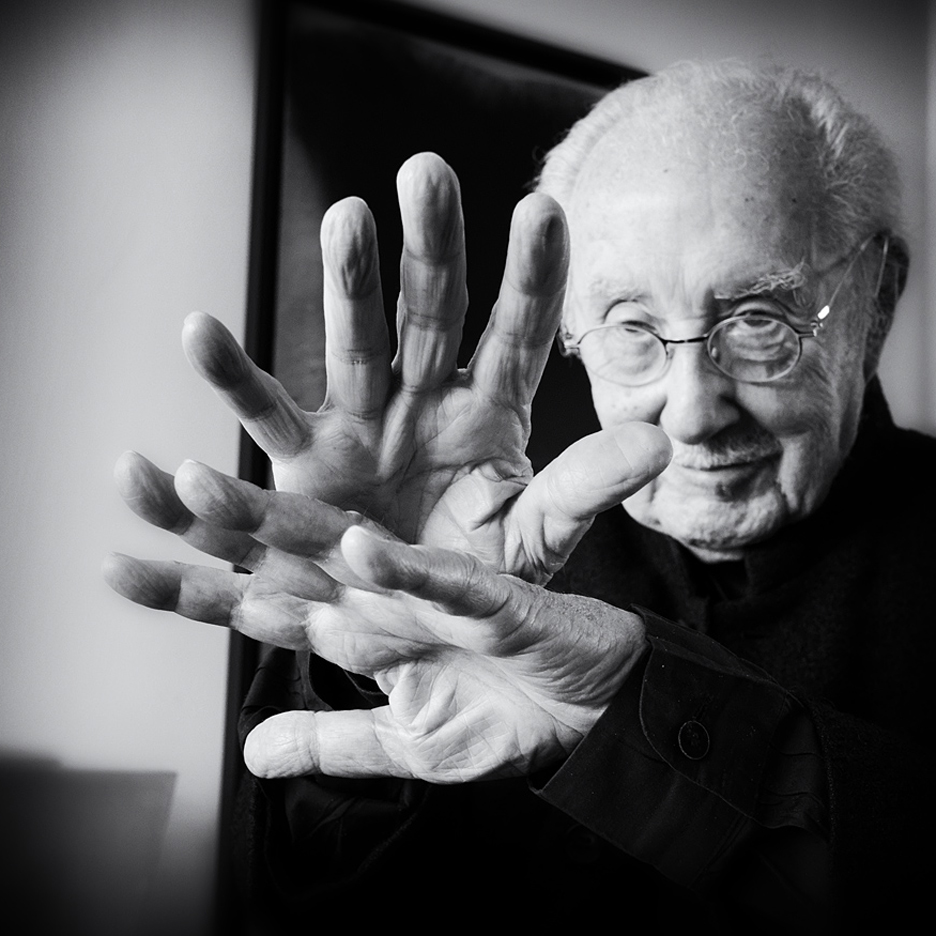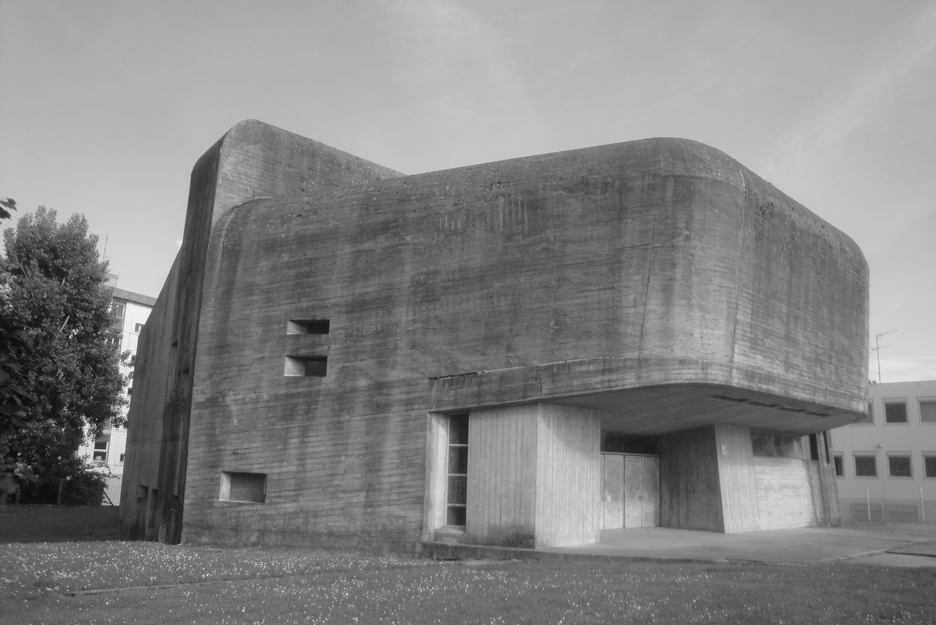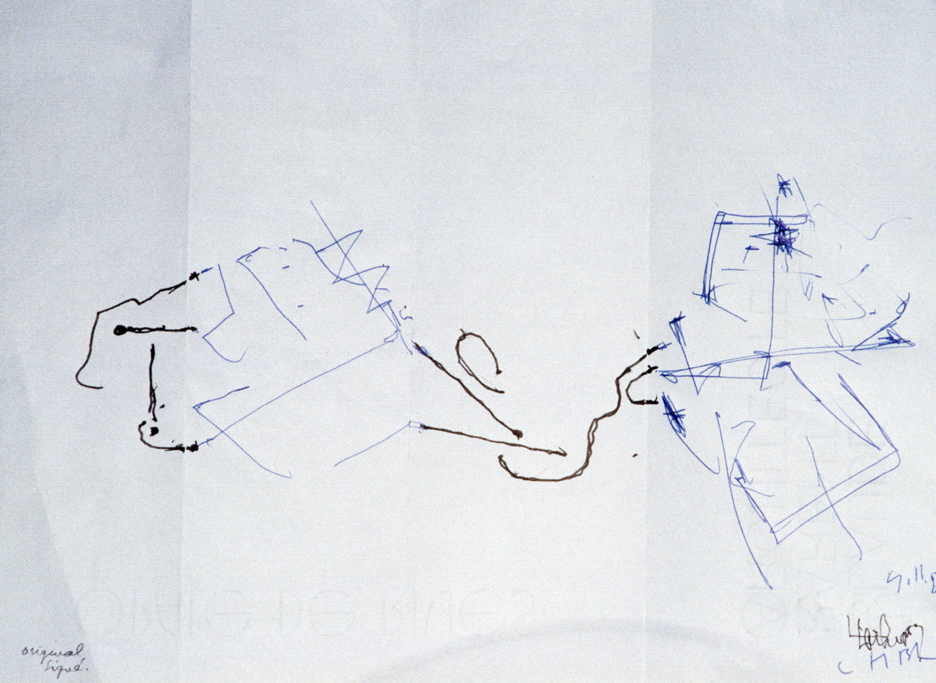
"Radical and audacious" French architect Claude Parent dies aged 93
Zaha Hadid, Daniel Libeskind, Jean Nouvel, Azzedine Alaïa and Wolf D Prix are among the architects and designers paying tribute to Claude Parent, creator of Oblique Architecture, who has died aged 93.
Described by Nouvel as the "Piranesi of this century", Parent passed away on 27 February 2016, the day after his 93rd birthday, in his hometown of Neuilly-sur-Seine.
With a career spanning over 70 years, Parent was one of France's most influential and subversive 20th-century architects, despite only designing a small number of completed buildings.
As a young architect he worked for Le Corbusier, but eventually rejected the older architect's ideas to develop his own theory.
"I was mean to him, telling him that his urbanism was worthless – and maybe I was right, because entire cities inspired by his theory, made of grids of residential towers, did not work," said Parent in a 2013 interview with Purple magazine.
Parent's theory was called Oblique Architecture, and championed a move from horizontal and vertical architecture into spaces defined by slopes and ramps. His primary concern was unbalanced spaces.
"Claude Parent was one of architecture's most radical and audacious visionaries; audacious enough to question orthogonality as architecture's natural realm, and propose the tilted plane as the engine of invention and surprisingly fertile basis of an alternative architectural scenario," Zaha Hadid told Dezeen.
His few well-known built projects include the Brutalist concrete Church of St Bernadette in Nevers, France. Built between 1963 and 1966, the church features sloping walls and tilted floors.
The building was conceived by Parent with philosopher Paul Virilio who was experimenting with designs based on bunkers from the Second World War. The pair's experience of vertigo inside German bunkers constructed along the Atlantic Wall became their reference for the church.

Two masses are supported by a central pillar, while floors slope towards the central support to pull churchgoers to the altar. A skylight in the centre references a crack in the bunkers.
After the church was finished, the duo formalised their ideas as the Oblique Function – or Function of the Oblique – and published a manifesto in 1966. They parted ways in 1968, with the split attributed to Virilio's interest in the political and Parent's desire to focus purely on "the oblique".
But Parent's influence spread thanks to his drawings and utopian ideas for cities built on angles. His theories have influenced the designs of many contemporary architects, including Hadid, Daniel Libeskind, Wolf D Prix, Sou Fujimoto and SANAA.
"Claude Parent is the architect who, since the 60s, gave a different view of French architecture, oriented vision towards the future and towards art in a direction diametrically opposite to that of Le Corbusier," said Jean Nouvel, who began his career in Parent's studio.
"Rejecting the vertical city, he imagined the oblique cities where the inhabitants live mainly as the mountaineers on the slopes, a new organisation of space based on the health and enjoyment of the body in motion."
Parent, known for travelling in a white Rolls-Royce, was born in French town Neuilly-sur-Seine and trained at the Académie des Beaux-Arts, although he never actually completed his studies.
"I've never been rich, but if you have the balls and enough credit, you can buy and drive a Rolls-Royce," he told Purple. "No other architect in the world would dare do that, for fear of what people might say. That is definitely a provocation. I also wanted to show them that I wasn't following the rules of bad architecture, the diktats of my 'elders.' I wanted to live like someone who'd succeeded in life."
His first significant building was Maison G, just outside of Paris, in 1952. A small house based on an idealised American bungalow, but with broken lines created by a large wall.
This was followed by the 1963 Villa Drusch Versailles, which plays with Parent's ideas of unbalance with a living room volume that looks as if it has been tilted on its side. In 1970, he designed the GEM Commercial Center at Sens with three ramped walkways on the front facade.
After closing his studio in early 2000s, Parent continued to illustrate his visions for a utopian city through drawings that explored the movement of populations.
"When I first encountered his work, I felt that his vision shattered the conventions of Modernist fundamentalism, opening totally new avenues for architecture," Daniel Libeskind told Dezeen.
"His genius was evident both in his work, his fantastic lyrical drawings and his persona. His use of oblique spaces, uncompromising geometries and bold forms, makes him of one the seminal architects of the late 20th century."

In his writings, he researched the activity of being an architect, how the world is structured, and reflected on the future of human life on earth.
"The world has lost a great architect who, among many others, deserved the Pritzker Prize already a long time ago," said Wolf D Prix. "I have lost a great friend and supporter whom I as an architect appreciated and will always appreciate."
In 1970 Parent designed the French Pavilion for the Venice Architecture Biennale. In 2014 Parent retuned to the biennale at the request of OMA co-founder Rem Koolhaas for the Dutch architect's Elements exhibition, creating an entirely ramped room for the exhibition.
His angled designs were also a feature of the Tate Liverpool's Biennale in 2014, for which he worked with the gallery.
"Claude Parent was not just an innovator in the field of architecture but a radical thinker who brought all sorts of practitioners to reconsider received ideas and to unlearn procedural habits," said Artistic Director of the Tate Liverpool, Francesco Manacorda.
In 2005, Parent became a member of the Académie des Beaux-Arts in France.
At the start of this year, he attended the opening of Gallery Azzedine Alaïa's Museums to Come after being hospitalised. The exhibition compared his unbuilt museum designs with those of Nouvel, who was also in attendance.
"Claude Parent and I met on so many topics: from fashion – he started his career as an illustrator, and was very knowledgeable – to the way he looked at women and, of course, architecture," Azzedine Alaïa told Dezeen.
"He was, throughout his life, completely faithful to his ideals and uncompromising about them. It has been a great privilege to host his exhibition with Jean Nouvel."
Other architects who have cited Parent as an influence include Odile Decq.
"I finally met him in the mid 1980s," said Decq. "I appreciated the humour and mischief, his energy and free thought. He never accepted the compromise. Two days before his death, he said again: 'I am free'."
"I recognise myself in him because he has always fought against the constraints and doctrines and not getting caught up in the system."
Portrait is by Emmanuel Goulet.